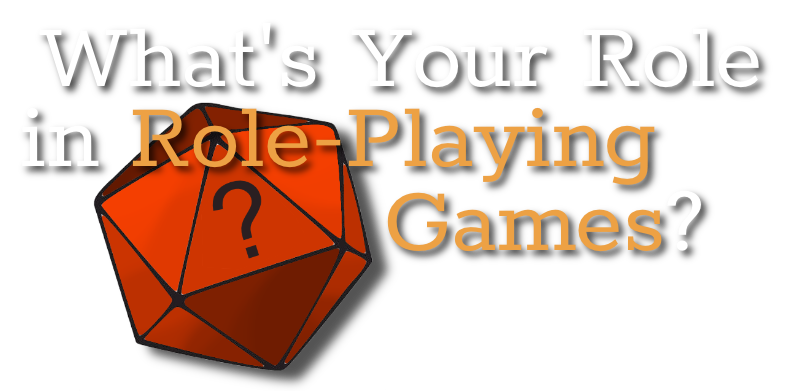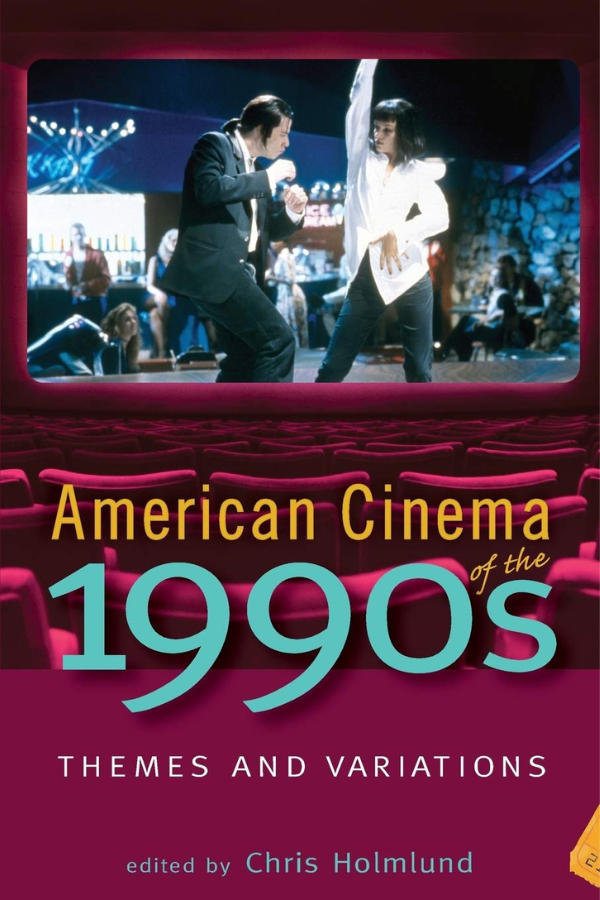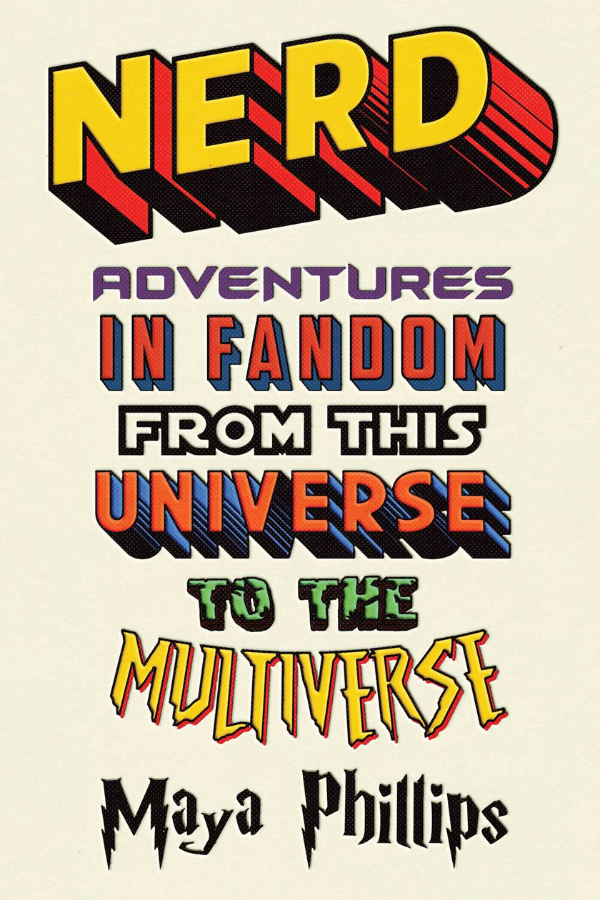<<BACK TO POP CULTURE
September 25, 2022:
I have never considered the 1990s to be a particularly game-changing decade when it came to pop culture. Those ten years had neither the paradigm-shifting masterpieces of the 70s; the neon-colored, over-the-top ridiculousness of the 80s; nor the epic, franchise-building accomplishments of the new millennium. It was a decade dominated by now forgotten boy bands and girl bands ('NSync who? Spice Girls what?), ridiculous toy trends (Bratz and Furbies), and the antics of funny young white people complaining about things that aren't really problems. However, there are some exceptions that prove the rule. In creating the list below, I tried to find examples that actually had a demonstrable impact on American popular culture, as opposed to short-lived trends or fads. Needless to say, it's not a long list.
Mystery Science Theater 3000 celebrates awefulness!
Like some other entries on my list, Mystery Science Theater 3000 (MST3K) started in the late 1980s, but it rose to prominence during the 90s. The cult hit racked up multiple seasons on various cable networks, a revival on Netflix, and one motion picture. That’s a fantastic accomplishment considering the whole thing started as a locally produced comedy show out of Minneapolis. Its success lay in a simple, highly relatable concept: riffing on movies whose entertainment value lies entirely in how terrible they are. Be honest, we’ve all done this. MST3K simply formalized the process and added some intriguing characters like a couple of wise-cracking robots who torment their human caretaker, who in turn is tormented by a series of evil scientists and their dim-witted accomplices. The show mostly mocked the science fiction, fantasy, and horror genres, but if it was bad enough, any movie was fair game. The enduring appeal of MST3K — over three decades after it first premiered — is proof enough of its impact on pop culture.
September 25, 2022:
I have never considered the 1990s to be a particularly game-changing decade when it came to pop culture. Those ten years had neither the paradigm-shifting masterpieces of the 70s; the neon-colored, over-the-top ridiculousness of the 80s; nor the epic, franchise-building accomplishments of the new millennium. It was a decade dominated by now forgotten boy bands and girl bands ('NSync who? Spice Girls what?), ridiculous toy trends (Bratz and Furbies), and the antics of funny young white people complaining about things that aren't really problems. However, there are some exceptions that prove the rule. In creating the list below, I tried to find examples that actually had a demonstrable impact on American popular culture, as opposed to short-lived trends or fads. Needless to say, it's not a long list.
Mystery Science Theater 3000 celebrates awefulness!
Like some other entries on my list, Mystery Science Theater 3000 (MST3K) started in the late 1980s, but it rose to prominence during the 90s. The cult hit racked up multiple seasons on various cable networks, a revival on Netflix, and one motion picture. That’s a fantastic accomplishment considering the whole thing started as a locally produced comedy show out of Minneapolis. Its success lay in a simple, highly relatable concept: riffing on movies whose entertainment value lies entirely in how terrible they are. Be honest, we’ve all done this. MST3K simply formalized the process and added some intriguing characters like a couple of wise-cracking robots who torment their human caretaker, who in turn is tormented by a series of evil scientists and their dim-witted accomplices. The show mostly mocked the science fiction, fantasy, and horror genres, but if it was bad enough, any movie was fair game. The enduring appeal of MST3K — over three decades after it first premiered — is proof enough of its impact on pop culture.

Babylon 5, sci fi's redheaded stepchild, (re)introduces epic storytelling.
J. Michael Strazynski’s lower-budget science fiction show was notable for several reasons. First, Babylon 5 was a pioneer in introducing an epic TV series with discernible first, second, and third acts revealed over a five-season run (1994-1998). The other sci-fi shows of the age (Stargate SG-1, Star Trek Voyager, Star Trek Deep Space Nine), consisted mainly of stand-alone or short-lived plots that often resulted in disjointed storytelling. Second, B5 embraced some of those universal themes that made Star Trek so timeless, from religious faith to racism to self-sacrifice to the power of forgiveness. Third, it was one of the first TV shows to use computer-generated imagery (CGI) consistently. By today’s standards, the space battles and CGI aliens are primitive-looking, but back in the day, Strazynski and his team were pioneers in a filmmaking method that is now the industry standard. As for the epic storytelling, what B5 did created a precedent for some of the greatest epics of our current day — everything from the Marvel Cinematic Universe to Game of Thrones.
Terminator 2: Judgment Day lays the groundwork for digital filmmaking.
If Babylon 5 helped usher the digital age into television, Terminator 2: Judgment Day locked it in for the movie industry. This superior sequel to 1984’s The Terminator wasn’t the first film to blend CGI with live action — that honor goes to Disney’s Tron from 1982. However, T2 did mark the point of advancement where the line between CGI and reality became very blurry. The liquid metallic T-1000 moved, morphed, and reflected in a way never before demonstrated on the big screen. From this point, digital imagery was the wave of the future. This trend would be locked in two years later when the technology brought dinosaurs back to life in Jurassic Park. From this point forward, digital was the preferred and dominate path for the future of filmmaking.
If Babylon 5 helped usher the digital age into television, Terminator 2: Judgment Day locked it in for the movie industry. This superior sequel to 1984’s The Terminator wasn’t the first film to blend CGI with live action — that honor goes to Disney’s Tron from 1982. However, T2 did mark the point of advancement where the line between CGI and reality became very blurry. The liquid metallic T-1000 moved, morphed, and reflected in a way never before demonstrated on the big screen. From this point, digital imagery was the wave of the future. This trend would be locked in two years later when the technology brought dinosaurs back to life in Jurassic Park. From this point forward, digital was the preferred and dominate path for the future of filmmaking.
Harry Potter bewitches young adult literature.
Although the origins of modern young adult fiction can be traced back to the 1970s, it was J.K. Rowling who forever yoked stories about teens to paranormal and supernatural themes. With the introduction of the Harry Potter book series in 1997, the life of teenagers wasn’t just about angst, high school, and first crushes — it was now about angst, high school, first crushes, and magic. While countless authors lined up to imitate Rowling and her success, what Harry Potter ushered in was far from a fad. Carefully devised and beautifully written, Rowling’s books were indeed works of literature that both appreciated and celebrated their teen audience — and plenty of adults. Go in a book store today and and you can the enduring influence of Harry Potter in the young adult section which is still dominated by tales of teens, magic, monsters and miracles.
Although the origins of modern young adult fiction can be traced back to the 1970s, it was J.K. Rowling who forever yoked stories about teens to paranormal and supernatural themes. With the introduction of the Harry Potter book series in 1997, the life of teenagers wasn’t just about angst, high school, and first crushes — it was now about angst, high school, first crushes, and magic. While countless authors lined up to imitate Rowling and her success, what Harry Potter ushered in was far from a fad. Carefully devised and beautifully written, Rowling’s books were indeed works of literature that both appreciated and celebrated their teen audience — and plenty of adults. Go in a book store today and and you can the enduring influence of Harry Potter in the young adult section which is still dominated by tales of teens, magic, monsters and miracles.

Star Trek: The Next Generation really does go where no one's gone before.
When Star Trek: The Next Generation (1987-1994) was first announced, fans and critics alike were skeptical. They wondered how anything could compete with the legend of Star Trek, The Original Series (TOS). And for the first two years, it didn’t look like TNG was any threat to its predecessor’s legacy as it struggled to find its voice and escape the campy tropes of the original show. By season three, it had done so — going on to six more years, earning a whopping nineteen Emmys, inspiring four feature films, and now regularly listed as one of the best science fiction shows ever. Like TOS, it had a talented ensemble cast and wasn’t shy about exploring both vast universal themes and essential aspects of human existence. Not only did TNG exceed the accomplishments of the 1960s series, it great expanded and enhanced the entire Star Trek universe.
Iron Chef feeds our obsession with Japanese culture — and food.
This Japanese import crept into American television syndication from 1993 to 1999. Like MST3K, Iron Chef originally aired on only a handful of local stations but quickly found a devoted cult following. Its popularity exploded in 1999 when the Food Network picked it up as a regular show. The genius of Iron Chef came through its fusion of playful weirdness and engaging reality TV. The show featured two professional chefs facing off in a cooking battle around thematic, and often rare and expensive, ingredients. Takeshi Kaga hosted the show while dressed like a latter-day Elvis Presley with various cringe-worthy affectations — like taking ecstasy-inducing bites out of a bell pepper at the beginning of every show. Although the show’s original run was a mere six years, Iron Chef’s legacy proved to be a long one. It reinforced the American love for Japanese pop culture and cemented cooking shows as a mainstay of reality television.
This Japanese import crept into American television syndication from 1993 to 1999. Like MST3K, Iron Chef originally aired on only a handful of local stations but quickly found a devoted cult following. Its popularity exploded in 1999 when the Food Network picked it up as a regular show. The genius of Iron Chef came through its fusion of playful weirdness and engaging reality TV. The show featured two professional chefs facing off in a cooking battle around thematic, and often rare and expensive, ingredients. Takeshi Kaga hosted the show while dressed like a latter-day Elvis Presley with various cringe-worthy affectations — like taking ecstasy-inducing bites out of a bell pepper at the beginning of every show. Although the show’s original run was a mere six years, Iron Chef’s legacy proved to be a long one. It reinforced the American love for Japanese pop culture and cemented cooking shows as a mainstay of reality television.
The X-Files taps into our nightmares.
Few television shows from the 1990s were as impactful as The X-Files. Chris Columbus‘s opus centered around FBI agents Fox Mulder and Dana Scully, who were tasked with investigating unusual and paranormal phenomenon. Over the nine years, this ranged from conspiracies about extraterrestrials, to strange monsters, to supernatural phenomenon of all kinds. The series was based loosely on the U.S. Air Force’s Project Blue Book, a study of unidentified flying objects from 1952 to 1969. But it also paid homage to other TV shows like Kolchak: The Night Stalker (1974). The X-Files whet America’s appetite for all things paranormal, and the two main characters became unintentional influencers on everything from their state-of-the-art cell phones to their trendy business couture. While I don't think The X-Files itself has aged particularly well, it did pave the way for modern paranormal mysteries and horror, including American Horror Story and innumerable feature films.
Few television shows from the 1990s were as impactful as The X-Files. Chris Columbus‘s opus centered around FBI agents Fox Mulder and Dana Scully, who were tasked with investigating unusual and paranormal phenomenon. Over the nine years, this ranged from conspiracies about extraterrestrials, to strange monsters, to supernatural phenomenon of all kinds. The series was based loosely on the U.S. Air Force’s Project Blue Book, a study of unidentified flying objects from 1952 to 1969. But it also paid homage to other TV shows like Kolchak: The Night Stalker (1974). The X-Files whet America’s appetite for all things paranormal, and the two main characters became unintentional influencers on everything from their state-of-the-art cell phones to their trendy business couture. While I don't think The X-Files itself has aged particularly well, it did pave the way for modern paranormal mysteries and horror, including American Horror Story and innumerable feature films.
Comic book conventions go mainstream.
Although comic book conventions have their origins as far back as the 1930s, it wasn’t until the 1990s that they began to embrace popular culture in all its forms. This change meant cons were destined to go mainstream with the American public. To my mind, it’s debatable whether or not these changes were good. Honestly, I miss the era when conventions were homegrown affairs organized and attended by small cohorts of dedicated nerds. In those early years, cons felt a little more secretive, even subversive. Now, some of the larger ones are akin to a day at an amusement park with their celebrity guests, workshops, massive vendor floors, and elaborate cosplay. And with some of them, good luck finding anything about comic books!
Although comic book conventions have their origins as far back as the 1930s, it wasn’t until the 1990s that they began to embrace popular culture in all its forms. This change meant cons were destined to go mainstream with the American public. To my mind, it’s debatable whether or not these changes were good. Honestly, I miss the era when conventions were homegrown affairs organized and attended by small cohorts of dedicated nerds. In those early years, cons felt a little more secretive, even subversive. Now, some of the larger ones are akin to a day at an amusement park with their celebrity guests, workshops, massive vendor floors, and elaborate cosplay. And with some of them, good luck finding anything about comic books!













